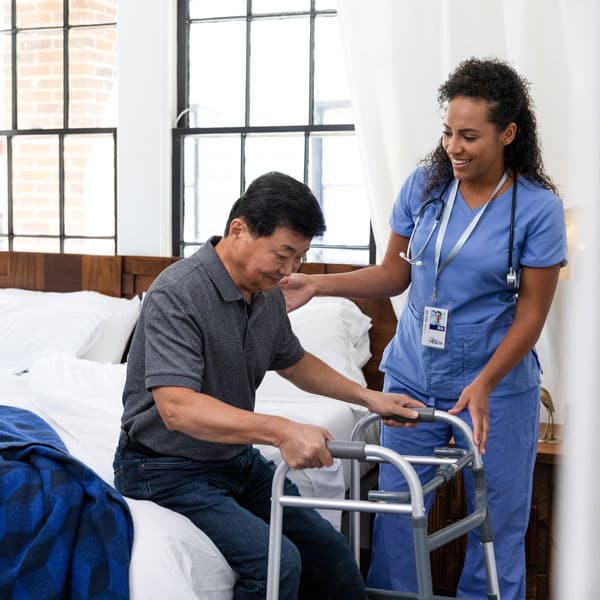From Application to Work: Understanding the Refine of Obtaining a Caregiver Job in copyright
From Application to Work: Understanding the Refine of Obtaining a Caregiver Job in copyright
Blog Article
How to Discover the Best Caretaker for Your Needs
In the world of caregiving, discovering the suitable caregiver to meet your specific needs is a critical venture that calls for thoughtful factor to consider and calculated preparation. Whether you are looking for support for an aging liked one, an individual with a handicap, or just a person who requires aid with daily jobs, the procedure of selecting the right caretaker can be intricate and difficult. However, by navigating with specifying your caregiving requirements, conducting comprehensive background checks, and critical compatibility with possible prospects, you can lead the way for a successful caregiver-client partnership. The trip to locating the very best caregiver for your special scenarios entails a series of deliberate steps that can ultimately lead to a harmonious and fulfilling caregiving experience.
Defining Your Caregiving Needs
When taking into consideration hiring a caregiver, it is vital to accurately define your caregiving needs to make sure the ideal suit for both you and the caregiver. Comprehending the level of treatment required will certainly aid in identifying candidates with the suitable abilities and experience.
In addition, consider the schedule and regularity of treatment required. Establish if you call for full time, part-time, or periodic aid. Plainly communicating your expectations relating to accessibility and adaptability will certainly help in discovering a caregiver whose schedule aligns with your demands.
In addition, analyze any kind of specific care requirements. If you have specific clinical problems or movement limitations, lay out these plainly to make sure the caregiver has the essential training and certifications to offer adequate assistance.

Performing History Checks
Commence the screening process by performing extensive history checks on prospective caretakers to ensure the safety and health of those under their treatment. History checks are necessary to confirm the caregiver's qualifications, experience, and reliability.
Furthermore, conduct a criminal background check to make certain there are no documents of violence, misuse, or other concerning habits. This step is important to protect prone people from potential injury. Inspect for any history of drug or alcohol misuse that might compromise the top quality of care given.

Interviewing Prospective Caretakers
After completing comprehensive history checks on possible caregivers, the following important step is to interview them to examine their suitability for the caregiving function. The interview process is a possibility to dig much deeper into the caretaker's experience, qualifications, and individuality to ensure they straighten with the needs of the treatment recipient.
Throughout the interview, it is necessary to ask particular inquiries associated with the caregiving jobs needed, such as their experience with comparable responsibilities, their technique to handling difficult scenarios, and their availability. Caregiver Job in copyright. It is likewise vital to ask regarding their qualifications, training, and any type of specialized abilities that could be relevant to the caregiving responsibilities
Observing just how the caretaker interacts during the meeting can provide important insights into their interaction design, empathy, and general attitude. This face-to-face communication enables you to evaluate whether the caretaker's personality and values are an excellent suitable for the treatment recipient. Furthermore, reviewing assumptions, timetables, and settlement throughout the meeting can assist make sure that both celebrations are on the very same page before moving forward with the caregiving arrangement.
Establishing Assumptions and Boundaries
To make sure a successful caregiving connection, establishing clear assumptions and boundaries from the outset is paramount. Clearly detailing the obligations, schedules, tasks, and communication approaches between the caretaker and treatment recipient is crucial for an unified partnership. Both events should honestly review preferences, limitations, and requirements to guarantee a mutual understanding of what is anticipated from each various other.
Setting borders is equally critical in preserving a healthy and balanced caregiver-care recipient dynamic. Caregivers must know their limits in terms of the care they can offer, both literally and emotionally, to stop fatigue and make certain high quality care. Similarly, treatment receivers should respect the caretaker's individual area, time off, and professional limits.
Routine check-ins and open interaction channels are essential for attending to any kind of issues that may occur relating to boundaries and assumptions. Flexibility and readiness to change these parameters as required can help cultivate a helpful and considerate caregiving environment for all included. By developing and appreciating these assumptions and borders, both caretakers and care recipients can interact properly in the direction of the common objective of supplying the very best feasible treatment.
Guaranteeing Compatibility and Long-Term Fit
Discovering a caretaker that is compatible with the treatment recipient and fits well for the long-term calls for thoughtful factor to consider and alignment of worths and expectations. Compatibility goes beyond simply abilities and experience; it includes an individual connection and understanding in between the treatment and the caregiver recipient. When seeking long-lasting fit, it is critical to analyze not only the caretaker's qualifications yet additionally their character, communication design, and technique to caregiving.
To make certain compatibility, it is advisable to perform complete interviews, include the treatment recipient in the choice process, and Source observe exactly how the caretaker connects with the specific requiring care. Additionally, reviewing choices, regimens, and possible challenges upfront can help avoid misunderstandings and problems in the future.
Routine check-ins and open interaction are important to preserving a positive caregiver-care recipient connection over time. Flexibility, perseverance, and a readiness to adjust to altering requirements are key factors in cultivating a lasting advice collaboration that profits both events. By prioritizing compatibility and long-term fit, you can establish a unified and helpful caregiving environment for all included.
Verdict
In final thought, discovering the most effective caretaker for your requirements involves specifying your caregiving demands, conducting thorough history checks, speaking with potential prospects, setting clear assumptions and limits, and guaranteeing compatibility for a lasting fit. By complying with these steps, you can make he has a good point sure that you find a caretaker who fulfills your requirements and provides the needed support and take care of you or your loved one.
When taking into consideration hiring a caretaker, it is important to properly define your caregiving requires to guarantee the ideal match for both you and the caretaker.Start the screening procedure by conducting detailed background checks on prospective caretakers to guarantee the safety and security and well-being of those under their treatment. Caretakers should recognize their limits in terms of the care they can give, both physically and mentally, to protect against burnout and make sure top quality care. By establishing and valuing these borders and expectations, both caregivers and care recipients can function with each other effectively towards the typical objective of providing the best possible treatment.
Locating a caretaker who is compatible with the care recipient and fits well for the long term needs thoughtful factor to consider and placement of values and expectations.
Report this page